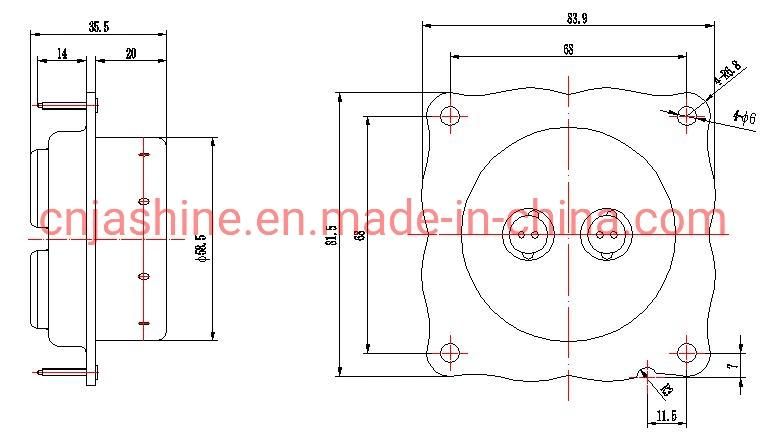Double Plug Airbag Gas Inflator for All Kind of Car Model
Cao County Jinlinyuan Wood Industry Co., Ltd. / 2022-06-24

- Type:Jas-Zs03-Ld
- Material:Aluminum
- Transport Package:Bubble Bag and Carton Box
- Specification:Standard
- Trademark:JASHINE
- Origin:China
=== Base Info ===
- Model NO.:JAS-ZS03-LD
- HS Code:3901100001
- Production Capacity:500000,Year
=== Description ===
Double plug gas inflator
Anti-aging property: in line with GB
Service life: 10 years
Shell: ST14
Gas toxicity: none
Resistance: 2±0.3Ω
Water resistance: conform to GB
Peak pressure: (in 100L pressure tank)
65KPa adjustable
Full firing current: 1.2A/2ms
No ignition current: 0.4A
Applicable air bag volume: 40-60L
Environmental test: conform to GB
Picture as below:



Airbag Inflators Basic Description:
The airbag inflator is one of the many components of an airbag system. The main purpose of an airbag is to slow the passenger's forward motion as evenly as possible immediately after a collision. One of the biggest challenges in early efforts to adapt airbags for use in cars was their high price and the technical difficulties involved in storing and releasing the compressed gas. These difficulties included providing sufficient room for gas storage in the car, maintaining the high pressure of the gas during the lifetime of the car, and producing quick and reliable expansion of the bag without causing injuries. These requirements suggested the need to develop an airbag design based on a chemical reaction that would produce nitrogen gas to inflate the airbag. The first automotive airbags developed in the 1970s employed a solid propellant. These airbag inflation systems reacted sodium azide (NaN3) with potassium nitrate (KNO3) in order to produce nitrogen gas. Hot blasts of nitrogen gas inflated the airbag. Because sodium azide is extremely toxic, these chemicals were widely phased out during the 1990s in favor of more efficient, less expensive, and less toxic alternatives. The alternative propellants may incorporate, for example, a combination of nitroguanidine, phase-stabilized ammonium nitrate (NH4NO3) or other nonmetallic oxidizers, and a nitrogen-rich fuel other than azide (e.g. tetrazoles, triazoles, and their salts).
When a crash is sensed, the control unit sends an electrical signal to the inflator. The chemical reaction is initiated by the igniter, generating primarily nitrogen gas to fill the airbag causing it to deploy through the module cover. Due to rapid speed change of the vehicles involved in a crash, airbags must inflate rapidly to decrease the risk of occupant injuries by protecting them from hitting the vehicle interior. From the beginning of the crash, the entire deployment process is about 50 milliseconds - faster than the blink of an eye (about 200 milliseconds). Tiny holes in the bag allow the gas to disperse, absorbing the force of the impact on the occupant.
Multi Stage Inflators:
To reduce injury as a result of airbag inflation, advanced technology inflators have been developed with the capability to change the inflation pressure. This helps control the force of deployment based on the intensity of the crash, the size of the occupant, and their position in the vehicle. These inflators consist of two chambers with dual initiators. Thus, by firing either one or both of the initiators, the force of the inflation can be controlled.
New product
Hot product
- Gm Candi Interface
2022-06-23
- Scan Dash V2.0 for BMW
2022-06-23
- K+Can Commander 2.0
2022-06-23
- Mut-3 Professional Diagnostic Tool Mut3
2022-06-23
- CKM-100 Key Programmer for Benz/BMW
2022-06-23
- Fuel Injector Tester & Cleaner (MST-N6A)
2022-06-23
- Mst 9000+ Plus ECU Simulator
2022-06-23
- OBD Ii Code Reader Mst-300, OBD2 Code Scanner
2022-06-23
- Digital Battery Analyzer (SC-100)
2022-06-23
- VAS5052A PC VERSION with VAS5054A Wireless Bluetooth Communicate
2022-06-23





